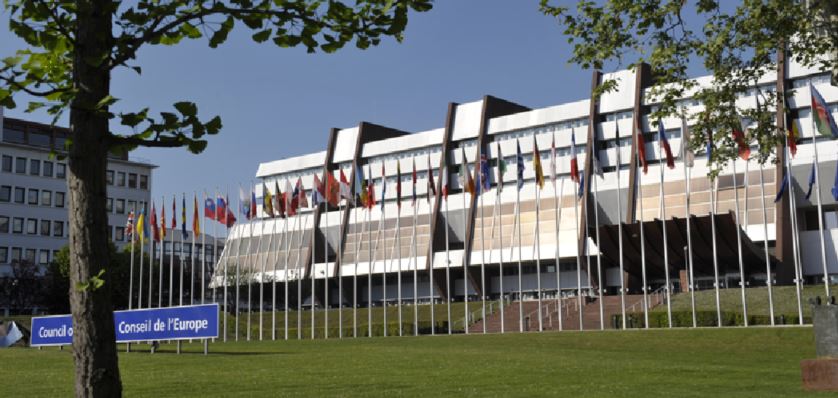European institutions and local governments
THE EUROPEAN UNION
It was only recently that the European Union (EU) took an interest in subnational authorities. Over time, the EU has successfully managed to ascribe an economic purpose to regional entities. There was no mention whatsoever of local governments in the EU’s founding treaties (Paris and Rome). Yet they were fully recognised in the Maastricht Treaty, which made sweeping changes to the way in which the EU works.
The Committee of the Regions, the EU body responsible for defending local and regional interests, both competed with and supplemented the work of the Congress of Local Regional Authorities at the European level. The European Commission, meanwhile, has introduced a regional policy as part of its European economic growth mandate. Ultimately, a closer working relationship between the institutions of the Council of Europe and the European Union has provided the framework for concerted cooperation in the interests of local self-government.
The Committee of the Regions (created in 1992 by the Maastricht Treaty), is the key institution in this respect. It is an advisory body comprising 350 locally and regionally elected representatives from all 28 EU Member States, including 24 representatives of French local governments. Each country nominates its representatives, who are appointed for five-year terms by the Council of the EU. The Committee of the Regions must be consulted on all decisions in areas that affect local and regional authorities.
The European Union launched a regional policy more than 40 years ago. The policy hinges on “European Structural Funds”, with a strong emphasis on regional development. The two largest funds are the European Social Fund (ESF) and the European Regional Development Fund (ERDF). The first was created in 1957 by the Treaty of Rome, and the second in 1975. In France, the funds were initially managed by regional prefects. However, this power was transferred to regional authorities by the act on modernising local government and strengthening metropolitan areas (MAPTAM) of 27 January 2014.[1] The situation is similar in most other EU Member States. The structural funds target economic and social initiatives in the most disadvantaged and deprived areas. EU regional policy is also supported by multi-annual development programmes – devised jointly by the European Commission and Member States – to implement large-scale projects (road infrastructure, etc.).
The European Union operates according to the principle of subsidiarity, under which the higher level only manages issues that cannot be dealt with effectively at the local level. This principle was the inspiration behind France’s constitutional act of 28 March 2003, which states that local governments should “take decisions on all matters that can best be implemented at their level” (art. 72 para. 2). However, this definition is legally ambiguous and tends not to be applied in practice in France.
In 1992, the European Union recognised that nationals of all EU Member States have the right to vote and stand in local elections, under the same terms as national elections, as part of its recognition of European citizenship. Nationals of EU Member States were granted the right to vote and stand for election in municipal elections in France via article 88-3 of the constitution (by way of exemption to article 3), and the act of 25 May 1998 (determining the conditions under which article 88-3 of the constitution applies). In order to protect France’s sovereignty, however, non-French nationals cannot be elected as mayors or be members of Senate electoral colleges.
The sheer diversity of territorial division models across the European Union naturally has consequences for the organisation of the EU’s redistributive policies. The EU’s economic and social cohesion objectives imply that aid should be distributed as closely as possible to where it is needed.
The EU has therefore gathered economic and social data to determine its own territorial division model for administrative purposes. European funds are distributed according to the Nomenclature of Territorial Units for Statistics (NUTS, from the French Nomenclature des Unités Territoriales Statistiques), so as to better target the needs of each territory.
The nomenclature is divided into three levels: NUTS 1 (population size of between 3 million and 7 million), NUTS 2 (800,000 to 3 million), and NUTS 3 (150,000 to 800,000). Although this nomenclature makes the territorial division of the EU even more complex, the evidence shows that there is a direct relationship between some of the NUTS levels and administrative divisions in Member States.
[1] Responsibility for managing employment and inclusion still rests with the French government (General Delegation for Employment and Vocational Training – DGEFP), which manages 65% of national ESF funding across employment, economic transition and inclusion (source: http://www.avise.org/articles/autorites-et-services-de-gestion-des-fonds-qui-fait-quoi/2016).

THE COUNCIL OF EUROPE
The Council of Europe was the first international organisation to fully recognise subnational entities in its work. This recognition of local governments is recognised both in advisory institutions and the European Charter of Local Self-Government, which still remains the only international treaty enshrining the rights of local governments. Despite its shortcomings, it provides essential guidance for countries looking to establish local democracy. The charter has been ratified by all Council of Europe Member States.
The Congress of Local and Regional Authorities (formerly the European Congress of Local and Regional Authorities) is a bicameral body that formally recognises two separate levels – local and regional.
The Congress of Local and Regional Authorities is a “pan-European political assembly, the 648 members of which hold elective office (they may be regional or municipal councillors, mayors or presidents of regional authorities) representing over 200,000 authorities in 47 European states”.
It consists of two assemblies, the Chamber of the Regions and the Chamber of Local Authorities, each comprising representatives of the different decentralised levels. Its remit encompasses promoting local democracy, cross-border co-operation, and implementing the European Charter of Local Self-Government.
Aside from the Congress of Local and Regional Authorities, there are other Council of Europe bodies that take an interest in the status and action of subnational entities. These include the European Committee on Democracy and Governance, the Centre of Expertise for Local Government Reform, and the Conference of Ministers Responsible for Spatial Planning.
The European Convention on Human Rights makes no mention of local freedoms. Instead, these freedoms are enshrined in the European Charter of Local Self-Government, which was signed on 15 October 1985.
Over the years, the Council of Europe has also developed a series of legal instruments conferring new powers and competencies on local governments. These include peace-building (through the Outline Convention on Transfrontier Co-operation between Territorial Communities or Authorities), human rights promotion (through the European Charter for Regional or Minority Languages) and pluralistic democracy (by opening participation to groups such as youth and foreign nationals). And through their environmental and social policy-making powers, they also play a role in creating more human living spaces. As such, local governments have become multi-purpose entities capable of taking on new responsibilities across themes relevant to modern societies. At the same time, local self-government has become a multi-faceted concept and a benchmark for wide-ranging action. The concept of polycentric governance is something that affects all levels of power – international, national, regional and local. And the territorialisation of public policy is nothing if not its necessary complement.

The Congress of Local Regional Authorities has been successful at developing local democracy among Council of Europe Member States, taking its inspiration from international monitoring techniques. The main thrust of the Congress’ work involves monitoring implementation of the European Charter of Local Self-Government via a system of periodic reports and a group of independent experts. In addition, it monitors local and regional elections and conducts surveys as part of efforts to achieve a high degree of local self-government in Europe. Through its monitoring work, the Congress cements its position as a local self-government observatory – the organisation’s third pillar alongside the Parliamentary Assembly and the Committee of Ministers.
The influence of the European Charter of Local Self-Government is plain for all to see, especially in so-called “young democracies” and, to a lesser but still significant extent, in long-standing Member States, which have amended their constitutions, set up new institutions and engaged in sweeping reforms as they strive to reach the very highest standards in local democracy, inspired by the Charter. Most countries have embarked on a process of decentralisation. Some have faced setbacks and the process is often beset by overlap and confusion because laws are imprecise, structures are complex, and power struggles emerge with central government authorities and pressure groups. A common issue encountered across many countries is the persistent failure of central government to give local governments a meaningful say in decision-making around issues that affect them directly. Moreover, the financial difficulties that local governments face are hardly surprising given that reports and recommendations come against a backdrop of economic troubles. Local governments have often been the number-one target of budget cuts and reviews since the global economic crisis.





